School Daze
School Daze Comic
Download the full comic here now
Introducing ‘School Daze’ – A new comic co-produced with autistic students from New Forest School to support transitions to secondary school. We are really pleased to share a new comic called ‘School Daze’ as part of our Voices through Art project funded by the University of Southampton’s ESRC Impact Acceleration Account Funding (IAAF).
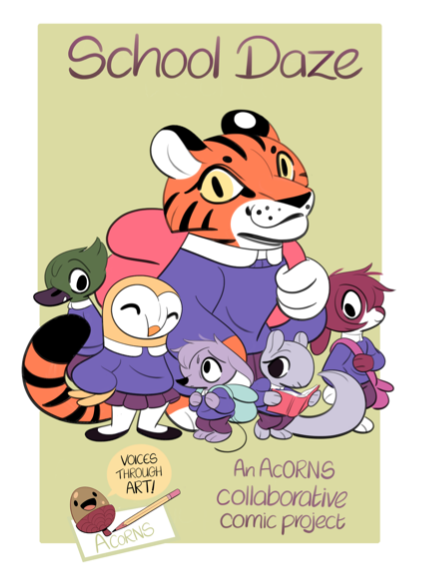
ACoRNS has collaborated with illustrator Sam Davies, Tracie Raufi (Assistant Headteacher-Curriculum and Head of Art and Design) and autistic students at New Forest School to co-produce a comic about the transition to secondary school. The comic tells the story of Lee Mouse who is getting ready for his first day at secondary school. The storyline reflects the voices and experiences of autistic students, as well as some of the strategies that they identified that support their well-being at school. These include having positive and understanding relationships with staff members, a safe space to go to decompress, and an opportunity to talk through worries and fears. We are working on developing educational resources that can be used alongside reading the comic – but in the meantime we would be very happy for you to share the comic amongst your networks. Any feedback gratefully received! The comic can be downloaded here: If you would like some printed comics for your settings, please get in touch with Dr Hanna Kovshoff at [email protected]. Watch this space for further School Daze comic developments!
“Thay will help me get throw the yier”
This is a comment from one of the students at New Forest School who has been feeding back on the comics at our final workshop on November 10th. He was responding to a question about the characters in the comics and how much he liked them.
Giving a top liking rating of 5 (out of 5), this student could see how the characters might help him throughout the year. The same student said he wanted to give the comics to his younger brother who is currently in Year 6 because he thought the comics would help as his brother ‘is a bit skerd’ [of starting at a new school].

A student creating his own comic book character
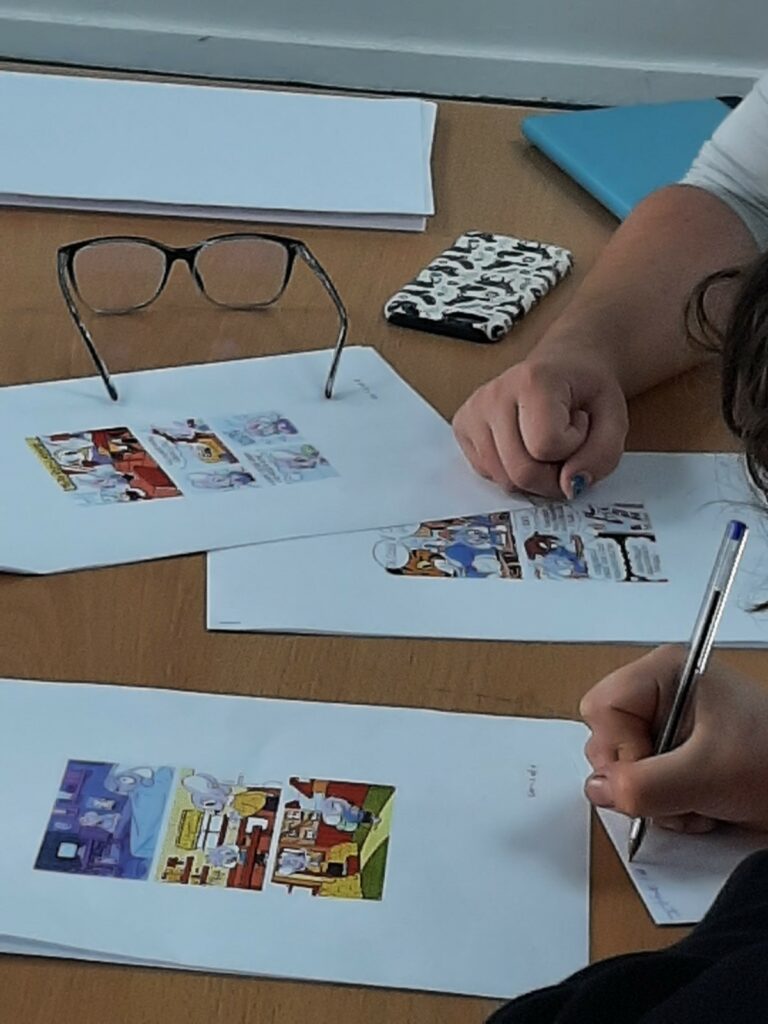
Providing feedback in the English class
Two groups of students took part in the workshops with 5-6 in each group. The groups worked on activities that were embedded into their Art and English lessons. The Art group focused on creating ‘brain characters’ who could help with their thinking and feelings; the English group read through the comics and provided feedback; then the groups swapped around.

Hard at work with Tracie in the Art class

Some of the finished art work on the board
We had some great feedback from the students which provided strong support for the comics, for example:

“I like that [the characters] are animals not people. The choice of animals are good because they match emotions to the type of animal. Wise Owl. Confident Tiger. Timid Mouse.”

“I like the comic as it helps people get used to transitioning. I like the characters as you made the character relevant to their role.”
It is important to us that the young people for, and with, whom the comics have been developed like what they see and that the characters and content feel relevant for them, and so we gladly welcome these comments, be they positive or negative.
Our next steps for the project are to:
- put together the final comic book, including deciding on a title and cover page
- make this available to our ACoRNS networks to promote its use in practice, along with some teaching materials and guidance
- make a pitch to a publisher to continue the work
We are excited to hopefully share the completed comic book with you very soon!
Thanks so much as always to the students and staff at New Forest School, especially to Tracie for planning and organising the workshops, and Amanda for brilliantly facilitating the English activities.
My ideal sidekick is…
Voices Through Art at the John Hansard Gallery [Part 1]
On August 10 and 11, the Voices through Art team held two workshops at the John Hansard Gallery in Southampton. The first workshop was aimed at autistic students, to gain further feedback on Comic 1, and some of the storylines and initial artwork for Comics 2 and 3.
The second workshop was aimed at invited professionals from different educational settings, to promote the use of comics to gain student voices, talk about transitions, and to think through how these can be best used and integrated into different educational practices and settings.
Inspired by the Hetian Patel exhibition taking place at the gallery, namely his Jump piece, we themed this workshop around the idea of a superhero’s sidekick. The students engaged discussing the qualities or skills that may make a good sidekick – someone you would want by your side in a sticky situation, and then drawing their ideal sidekick. All the attendees got stuck in, including our team. It was hugely inspiring to see how different ideas came to life in each student’s drawings and descriptions in different ways – some chose to to describe their sidekick before using this as inspiration for their drawing, whilst others did the opposite.
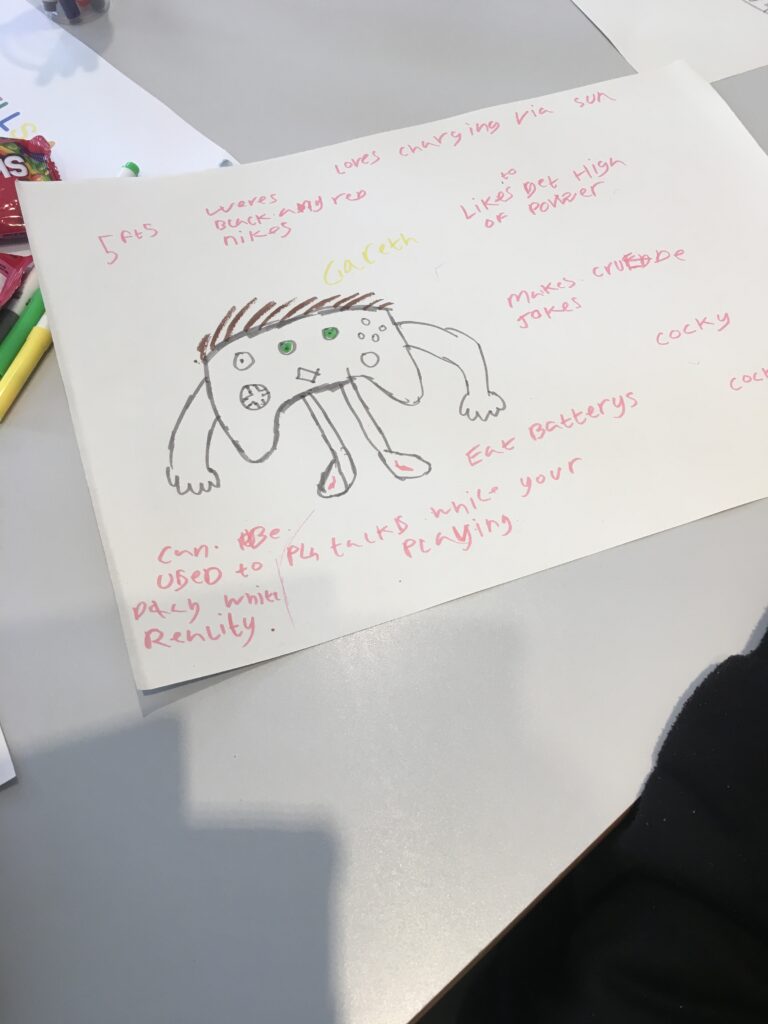
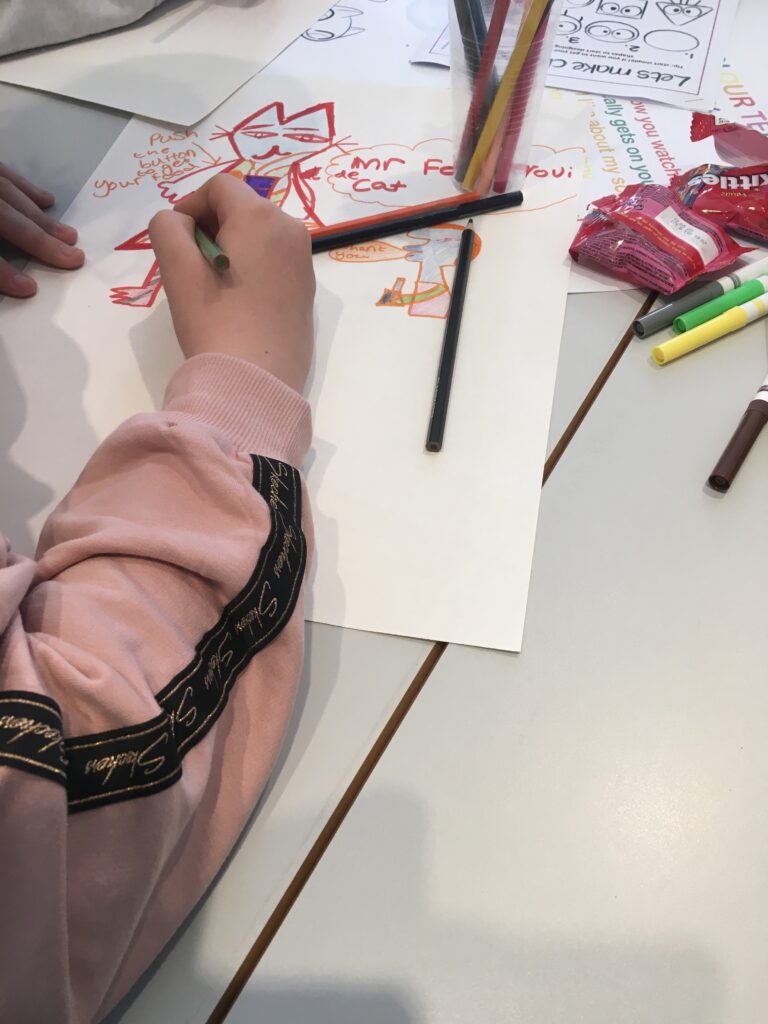
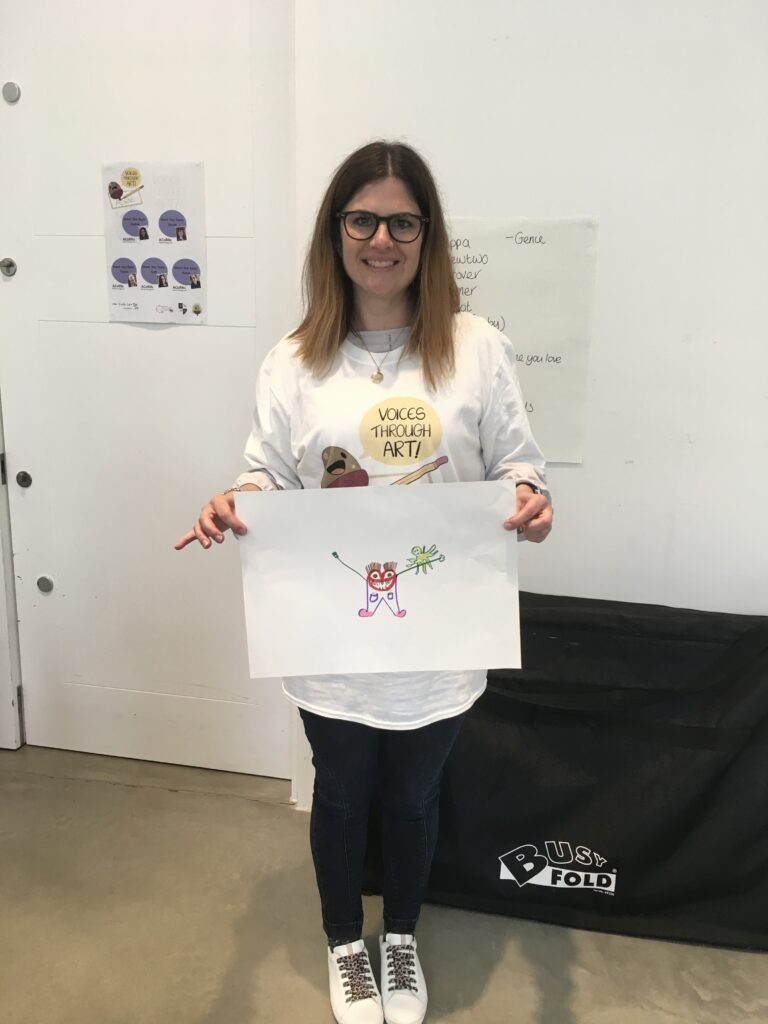
A selection of the students’ and team drawings!
Following this, Sarah, Sam, and Tracie performed a ‘dramatic re-enactment’ of our second comic, which is still in the sketch phases. We encouraged the young people to reflect on what they liked and disliked about the two new comics. We received a considerable amount of valuable information from these students; for example, they discussed a need for humour to be woven into the comics yet stressed an individual’s humour is unique and what could be funny for one person might not be for another. Further, the young people expressed ideas for further development of our comics, from character designs to stories like coping with the stress of travelling to school, getting ready in the morning at home, and dealing with a bully. These insights are incredibly valuable for the team – only the students can tell us what needs to be included in the stories, and how to depict their strengths and stressors.
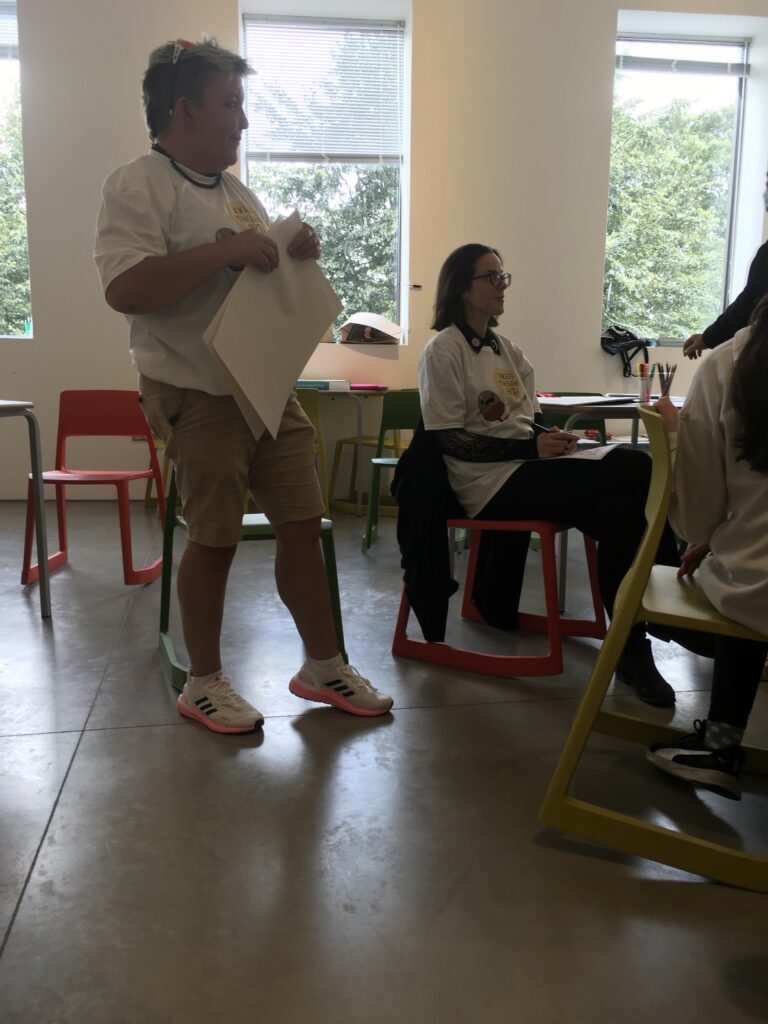
Tracie acting out the second comic to the students
Overall, we hope this session enabled the young people attending to feel like their voices and experiences were heard and appreciated by the team. We have taken this feedback ‘back to the drawing board’ and will implement it in our project – for example, some of the feedback we are working on now includes adding an extra page to comic 2, to better explore the different ways students may express themselves, and communicate their need for space, and changing the comic colours to reflect those most used by the students in their drawings.
‘Please keep developing this idea – it’s brilliant!’
Voices Through Art at the John Hansard Gallery [Part 2]
On August 11th 2021 we held the second of two workshops focusing on the development of our comics for supporting transitions. The first workshop on the day before was targeted at young people, while this one was targeted at professionals from varying backgrounds, including speech and language therapists and teachers.
We were also fortunate that some of our research students and trainee Educational Psychologists from the University could join us.
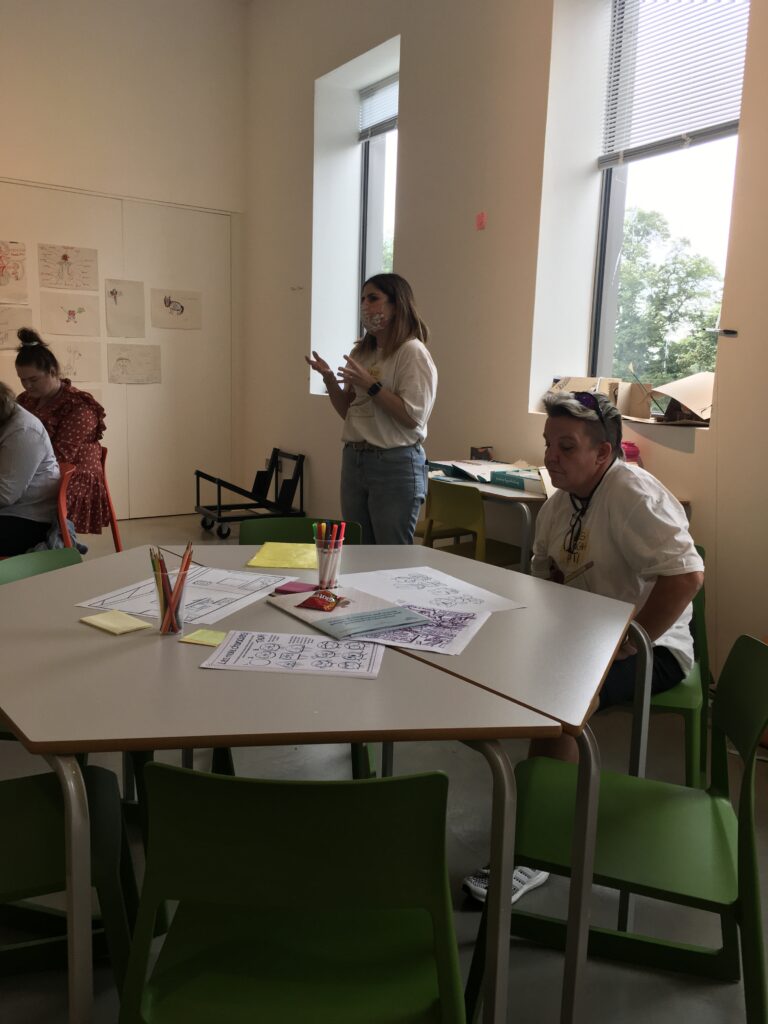
The purpose of this second workshop was to gain feedback from this group to help inform the development of the transition materials and to encourage attendees to think about how the comics could support discussions within their own practice or research.
We began this workshop with a brief introduction to ACoRNS and the Voices Through Art project. We provided a whistle-stop tour of what we’ve covered so far, and showed the group the first comic. We then encouraged the group, including ourselves, to draw our sidekicks in the same way as we had asked the young people to do. We felt it was important for all of us to experience what it’s like to be asked to do this task so that we are not expecting young people to do something that we wouldn’t do ourselves.
All attendees seemed to enjoy this element of the task. We introduced this exercise as a task that professionals could do with students to assist discussions about transitions. By learning what makes an ideal sidekick/partner/friend, we can identify what might help students from their perspectives. Keeping it visual can also help turn the task into something more enjoyable.


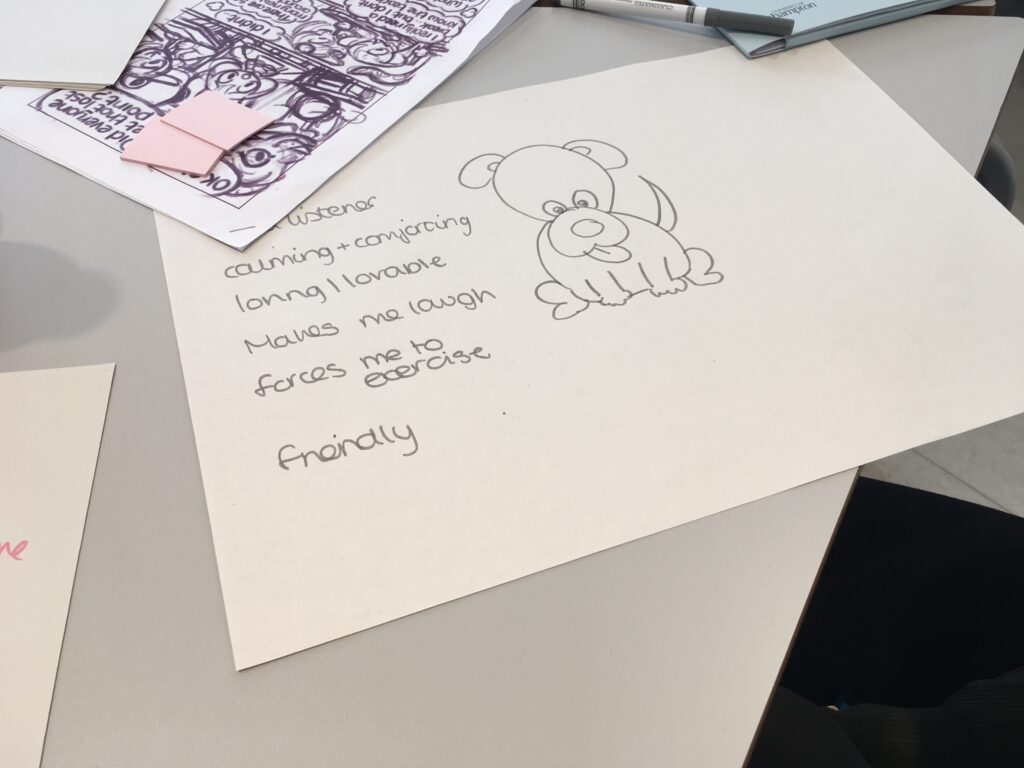

We then introduced the final two comics for feedback from the professionals, gathering a round of feedback that complemented many of the points the young people made. For example, the professionals discussed the characters chosen, and why they were the animals they were. As a team, we decided on Lee Mouse as our main character, hoping his small size might help to reflect how a young person feels moving into secondary school.
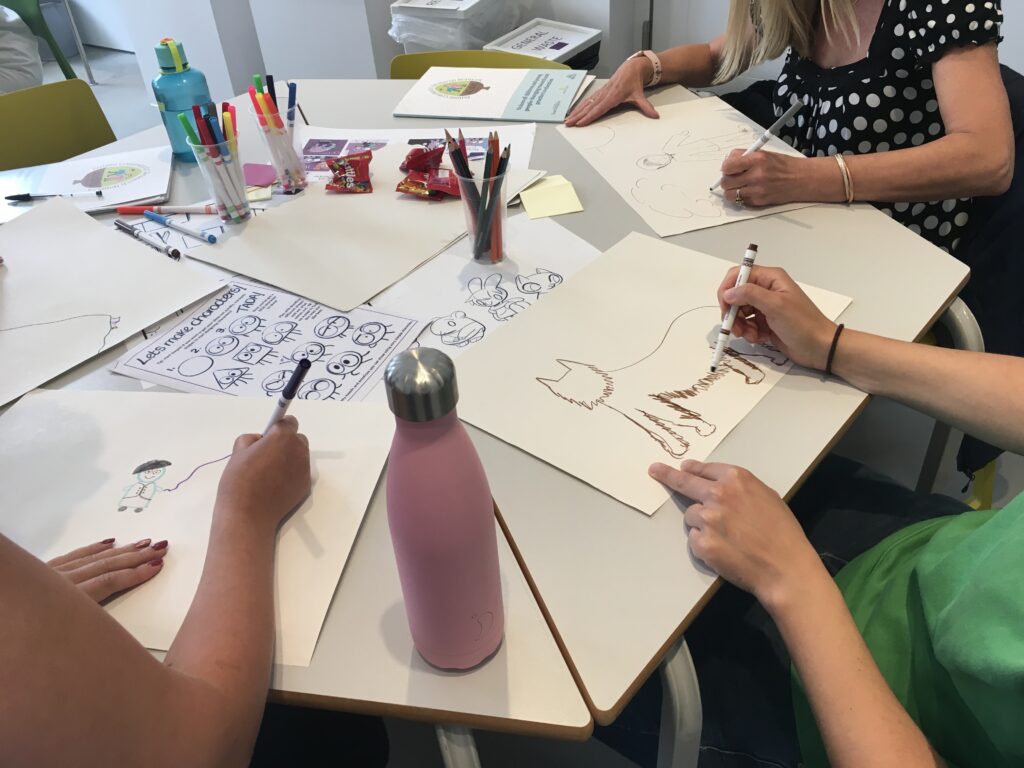
The attendees made further comments about some of the language used; the term ‘anxiety’, for example. A few people suggested that young people may not label their emotions as ‘anxiety’, instead as a feeling of ‘not feeling right’. Further, suggestive language such as ‘just say how you feel’ could pose issues for young people, as they may not be able to put into words how they feel. This is great feedback that we can use to revise the wording in the comic.
We also discussed the development of resources to accompany the comic. Attendees were enthusiastic about the possibilities and there were many suggestions including: allowing students to draw their characters, create their scenes, and even use the existing characters to communicate how the students may feel in certain situations.

Sarah proudly showing off her Dobby Donkey sidekick!
In summing up and feeding back on the day, we received several inspirational comments from the attendees, such as:
‘Such a brilliant concept – you can target so many of the worries that autistic children & all children are having in school. SLT’s [speech and language therapists] could use these comics to support children to learn how they can problem solve by personalising the comic. Please keep developing this idea; it’s brilliant!’
‘This course has helped me think more creatively to help the students with autism with transitions. I feel inspired. Thank you.’
Overall, the team are delighted with the outcome of both workshops. We have already begun utilising the feedback in refining our comics. We thank the John Hansard Gallery for allowing us to use their activities room for our workshop, New Forest Care for sponsoring a light lunch for the professionals, and all who attended our seminars and gave feedback.

The team hard at work
Voices Through Art: June Workshop with New Forest School
In June, we participated in a workshop run by Tracie and Sam at New Forest School. We have strived to include student voices at every step of our project but wanted to add a more immersive element to our work to help student motivation on the project.
A group of 12 students from New Forest School (mostly Years 7-8) took part in a day-long workshop which was used as an opportunity for the students to meet the Team working on the project and for us to gather first-hand feedback and ideas from the students. The morning session involved a brief icebreaker before the students were split into two groups – the first group worked with Sam and Tracie in the art room colouring in Sam’s line art characters, choosing the colours that they felt best suited the characters.
They also talked about the animal characters including which they identified with and what they thought the characters might say to each other if they bumped into each other on their first day. They also played around with drawing out their own characters starting with basic circle outlines that Sam generated to teach young people how to draw comic characters.
Meanwhile, the second group worked with Amanda, New Forest School’s English Teacher, and Annie to discuss the individual panels of the comic. Students were prompted to think about what the different colours and expressions of the characters meant, how each animal could represent a certain feeling or personality trait and relate back to their own transition experiences. They also talked about their own transitions, including what they felt worked best for them when they joined New Forest school and how they felt listened to. The groups rotated after lunch and carried out the previous group’s task.
The team are very grateful for this collaboration with New Forest School – and for Tracie’s organisation of a busy day where everyone could come together to work on the comic art and storylines.
The workshop enabled us to generate ideas for new character colours, animals, and storylines based on the students’ feedback, suggestions, and experiences. Sam is busily creating the next iteration of comics and we will once more gather student feedback on these. We expect the students will be able to see how their involvement in the workshop supported the next comic, and as ever, we look forward to all their comments and feedback to these which we will gather before the end of the summer term.
If you would like to be a part of this pilot please get in touch with Hanna Kovshoff who is leading the project:[email protected]
Voices Through Art Workshops at the Hansard Gallery
The Voices Through Art project team have been busy during the summer, holding two workshops at the John Hansard Gallery in Southampton. The first workshop involved students from New Forest School and the second workshop included professionals from a range of settings.
We wanted to seek a range of views and feedback for the development of our comics designed to support young people with their transition to a new school.
Led by inspirational art teacher and Assistant Head at New Forest School, Tracie Raufi, and graphic artist Sam Davies, the workshops started with everyone drawing their ideal sidekick and thinking about the qualities they wanted in them. All attendees got stuck in with this task, including our team members.
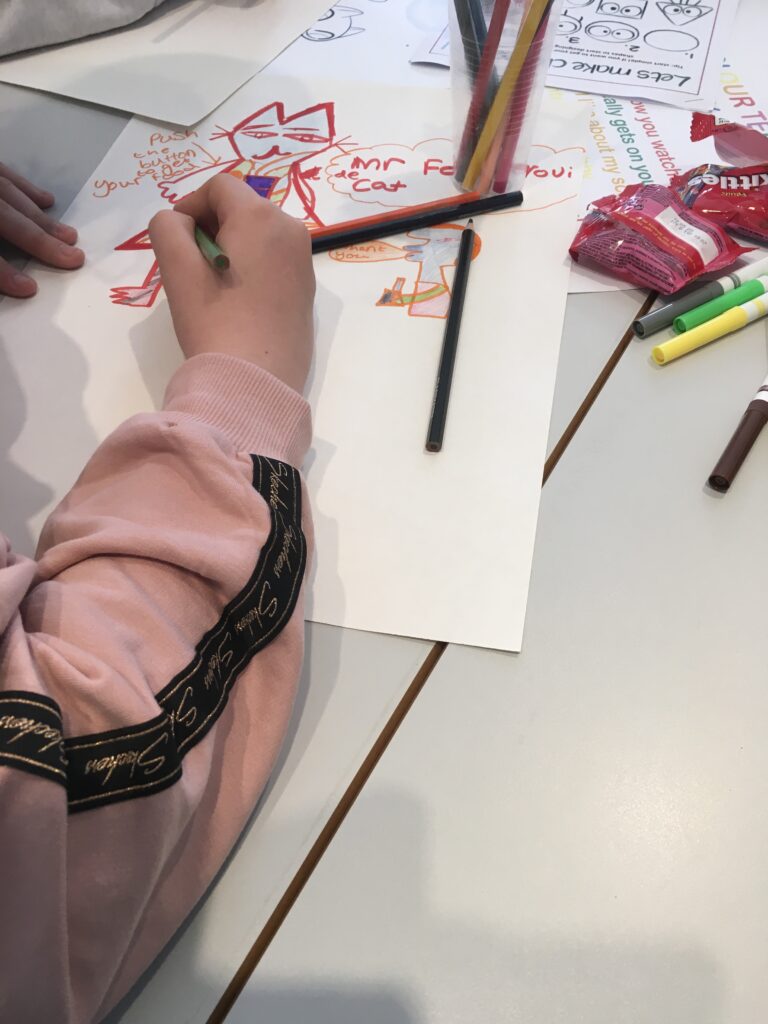
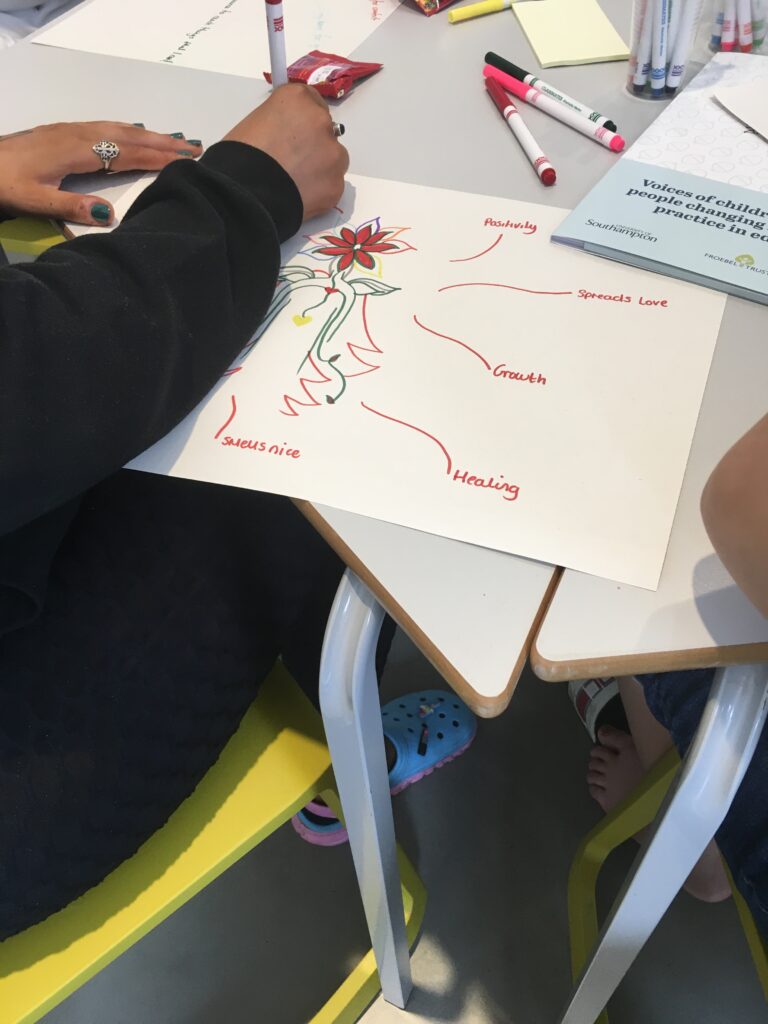
We also asked workshop participants to feedback on the first comic we created, as well as the next two comics that are currently in early draft form. Students discussed a need for humour to be woven into the comics yet stressed an individual’s humour is unique and what could be funny for one person might not qualify for another. They gave us some really great ideas for how students might signal to teachers that they need some time out or additional support.
Feedback from the professionals at the second workshop complemented many of the points our young people made, and also provided some good ideas for how the comics could be used to support conversations with young people, and in training sessions for teachers and other professionals.
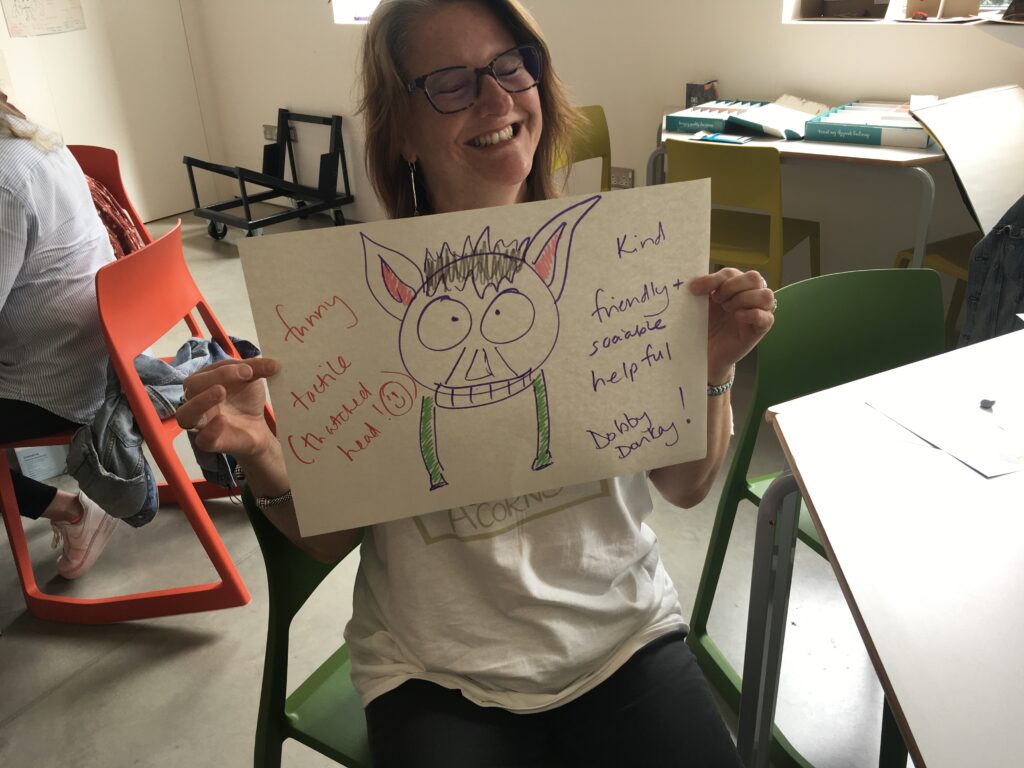

Overall, the team was delighted with the outcome of both workshops. We have already begun utilising the feedback in refining our nect comics. We thank the John Hansard Gallery for allowing us to use their activities room for our workshop, New Forest Care for sponsoring the event, and all who attended our workshops and gave feedback
Voices Through Art: Designing Comic 1
The process of making the first comic strip developed naturally from the format used to design the logo, passing ideas back and forth among the team and involving the young people’s input as much as possible.
First Tracie ran some question and answer sessions with students covering the sorts of experiences they had during school transition and also their opinions on the sorts of stories and characters they liked and felt represented by. Tracie also had very useful discussions with pupils about colours and how they represented different emotions for them, and how these perhaps differed from the standard colour emotion charts often used with autistic young people.
Sam drew out some basic comic making guides and initial character sketches for Tracie to use with students as part of inviting them to engage with the project.
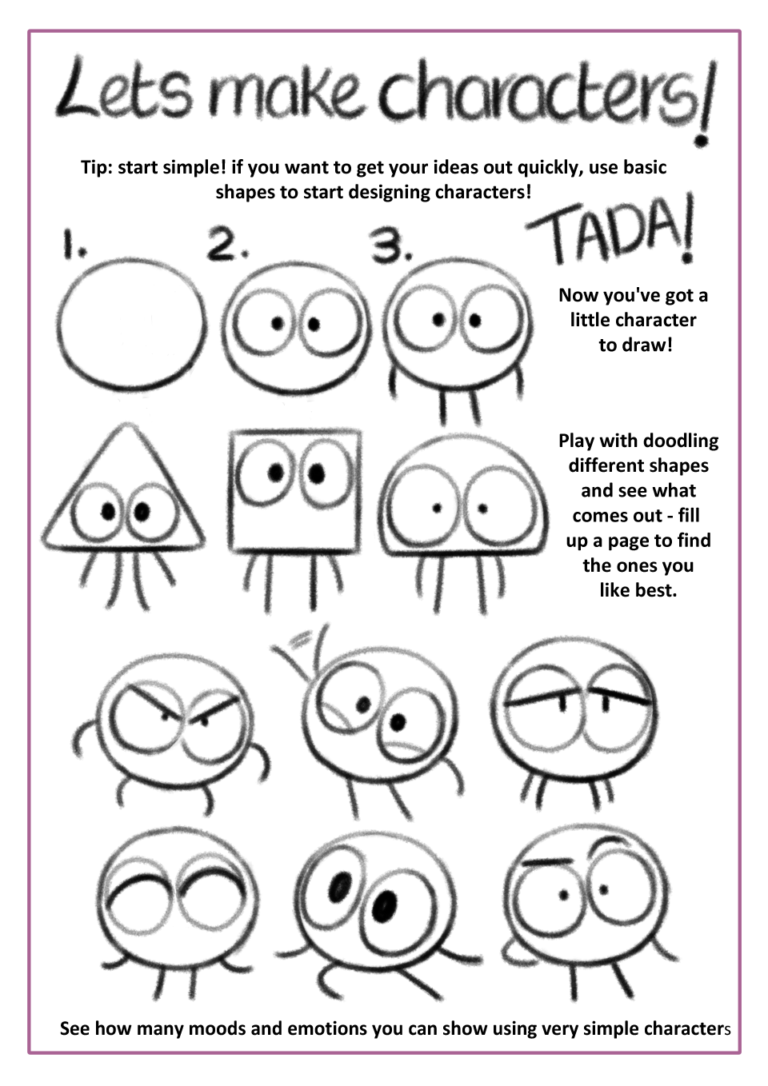
The discussions Tracie had with young people were shared with the team in anonymised text form. Sam then used the pupils’ answers together with research summary outcomes collated by Hanna and Sarah to draft 4 rough story outlines that attempted to capture some of these experiences in fictionalised form.
The team discussed the outlines and came to an agreement on the one they felt worked best as a first comic. As Coronavirus restrictions and in person school closures at this point meant it was difficult to seek further direct student feedback the team agreed to use this first comic as a ‘tester’ that we could hopefully present to students when finished and gather their in depth responses before moving to the next comic.
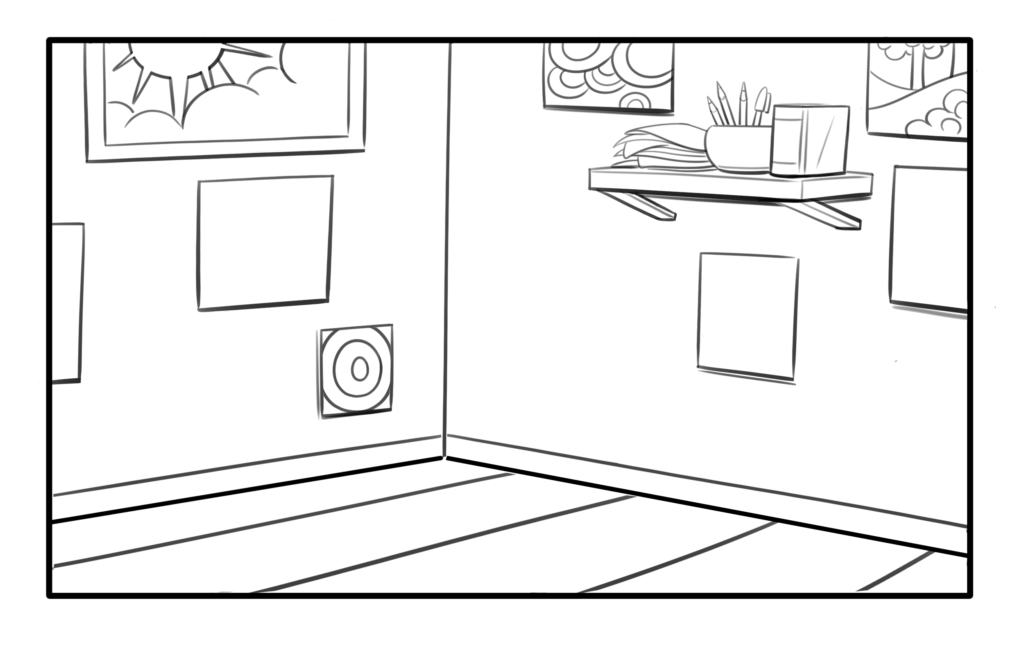
It was agreed that using anthropomorphic animal characters would be a quick way to communicate characters’ inner states and anxieties visually. Giant characters juxtaposed with much smaller ones and ears, tails and colour combinations being a great way to express extra emotions without needing a lot of expository text on the page.
Sam designed characters with an eye towards simplicity and relatability, after the team decided a small nervous mouse would make a good main character for readers to connect with. Sam shared rough digital pencil versions of the strip with the team before progressing to final inks and colours (the team was also eager to suggest kinds of animal they’d like to see popping up in the background of the comic!)
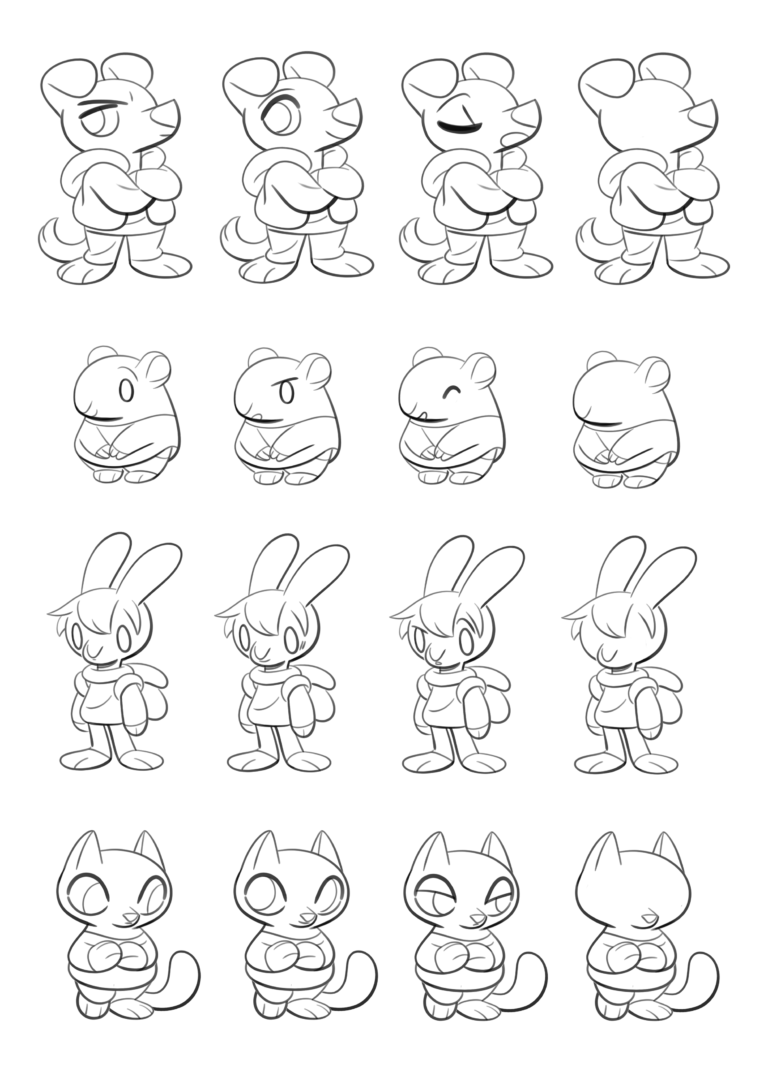
First Steps… (ACoRNS Voices Comic 1)
This post involves an embedded pdf. Click on the 'Read More' button below to view it.
Voices Through Art: Designing our Logo
As a team we realised creating a logo for the project would be an opportunity to start testing out the best ways to work collaboratively with young people to create artwork. We knew it may take some time to find an approach that was both functional and inclusive of the young people’s ideas and experiences...
Sam, the comics artist began by sketching some initial logo design options. She focused on the rough brief of communicating the creative nature of the project and finalising a title/ tag line for it under the wider ACoRNs banner.
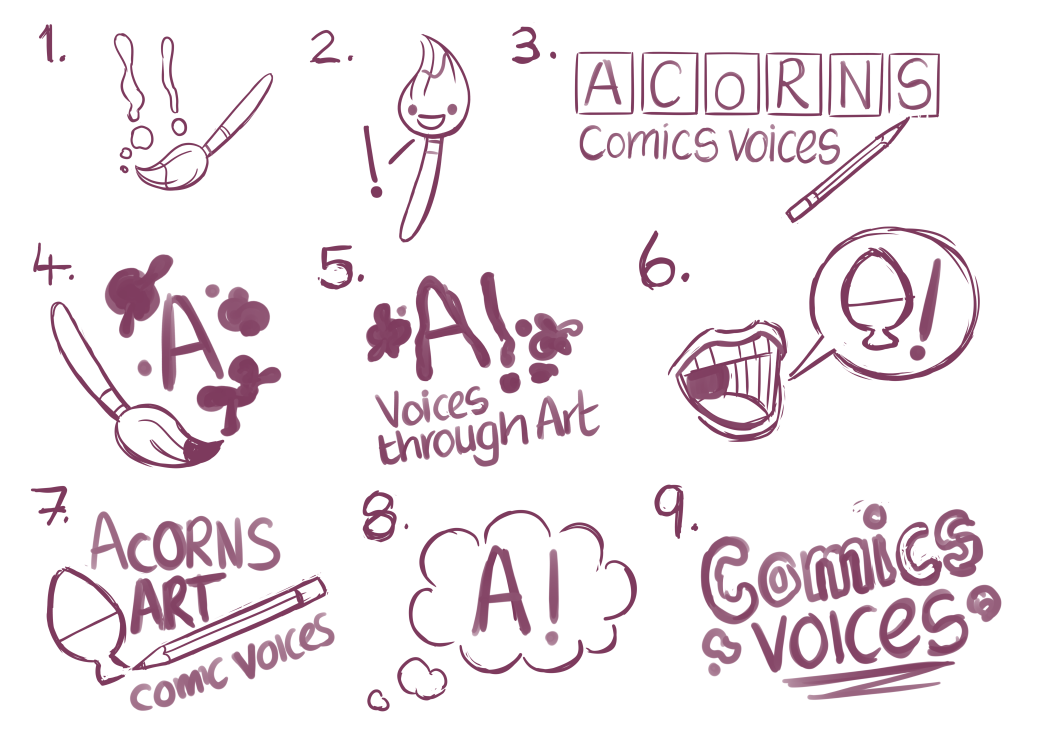
First round of rough designs
The team then discussed the images and highlighted the ones we felt were working most effectively. Ultimately we all decided that the best way to move forward from this point was to share the sketches directly with the young people and get their responses before we progressed the design further.
Tracie, Head of faculty for Art Design and Technology at New Forest School, ran a session with small groups of pupils, year groups 7-10 asking them to design logo ideas using the images Sam created as a starting point of inspiration. Students really rose to the challenge and had definite ideas about what the final image should highlight. One very interesting bit of feedback was the need for the images alone to give a good sense of the project, as some young people might be unable to read the text. Students were also very enthusiastic about having ‘young people’s voices’ as a concept feature strongly in the design. As can be seen in the images below students created vibrant, lively artwork using digital tools!
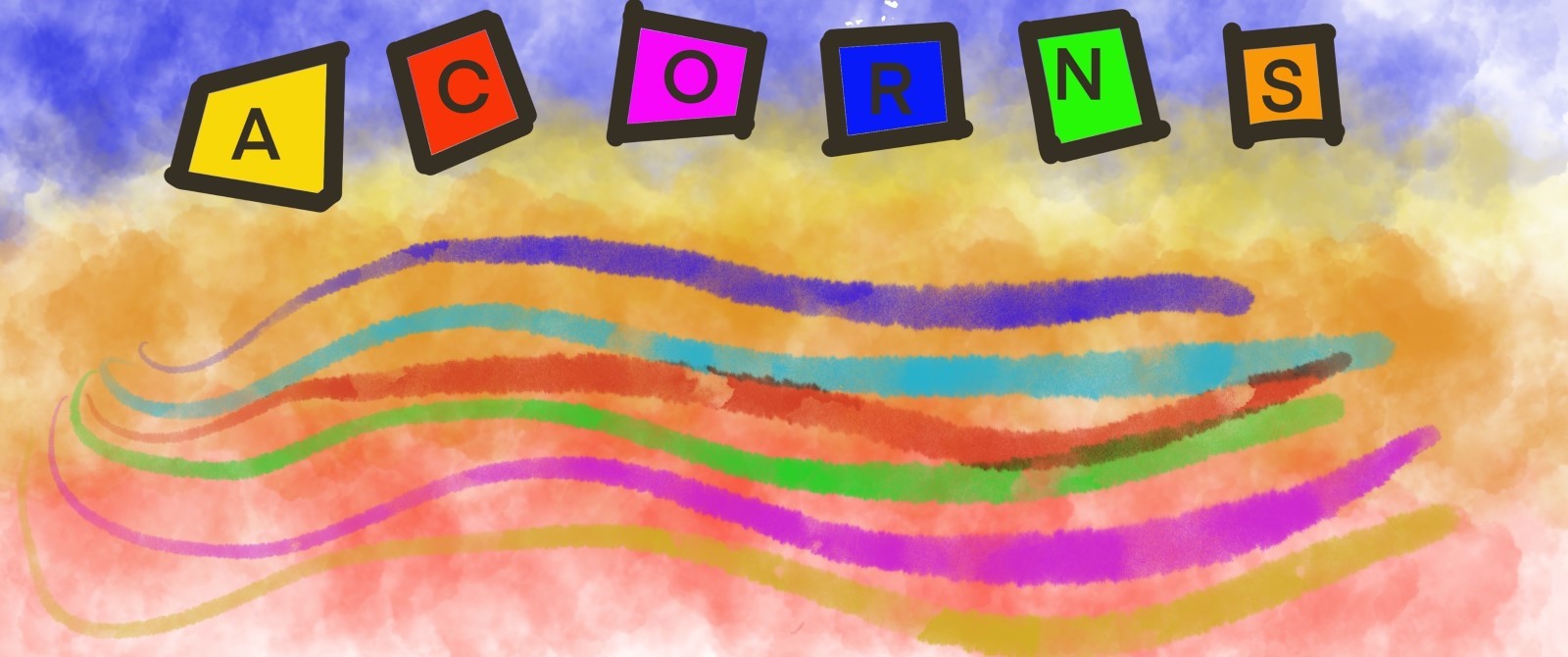

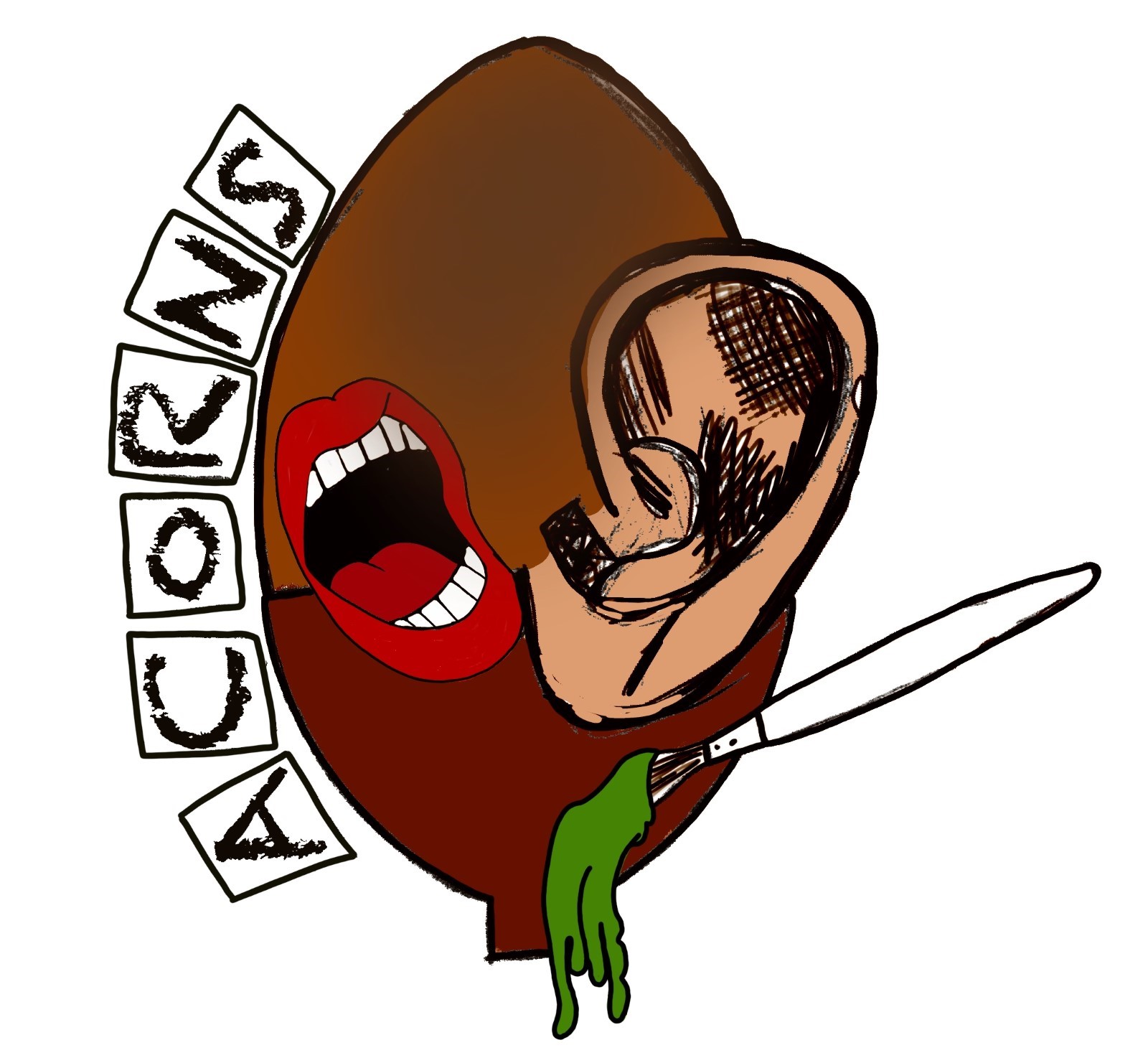
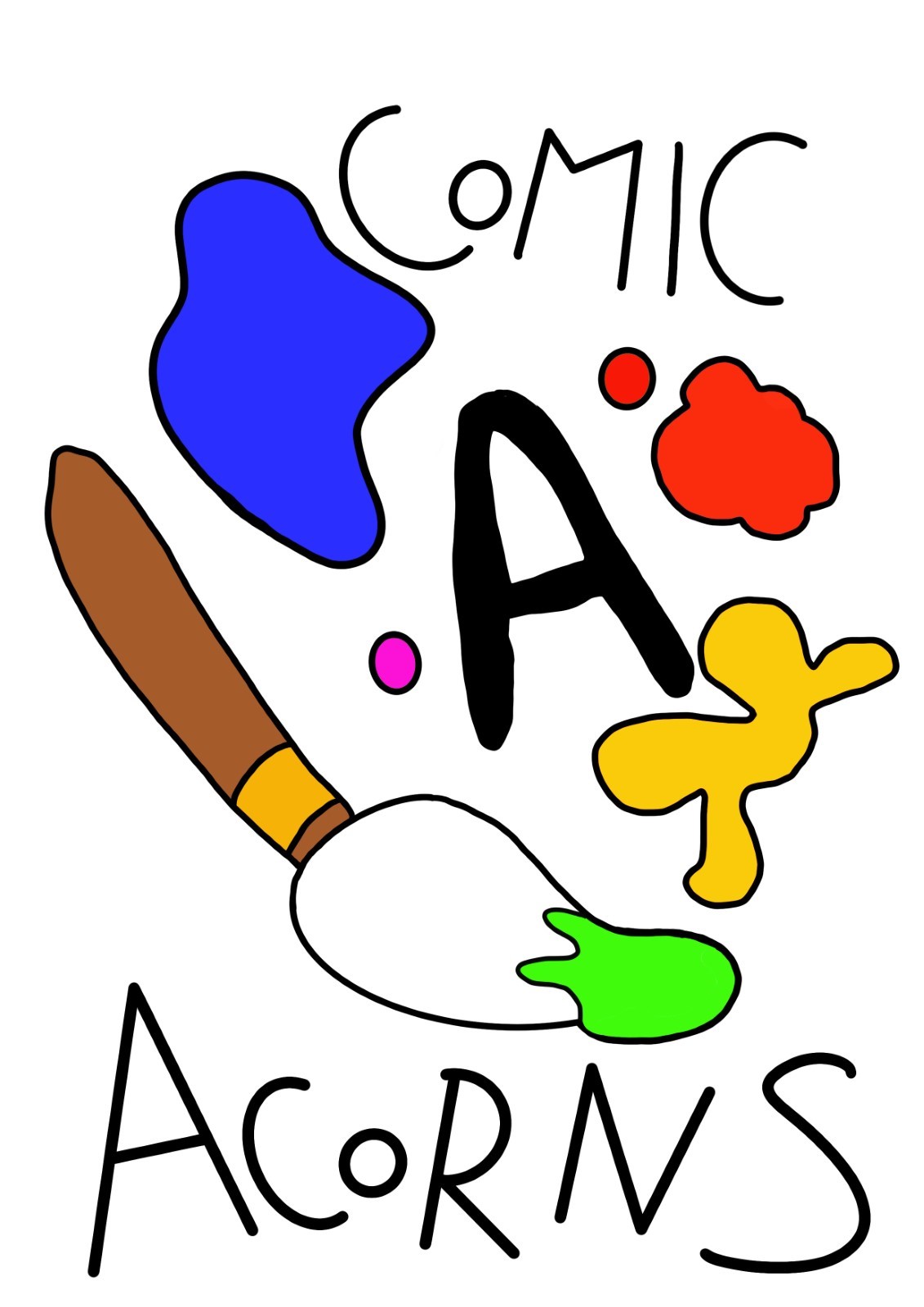
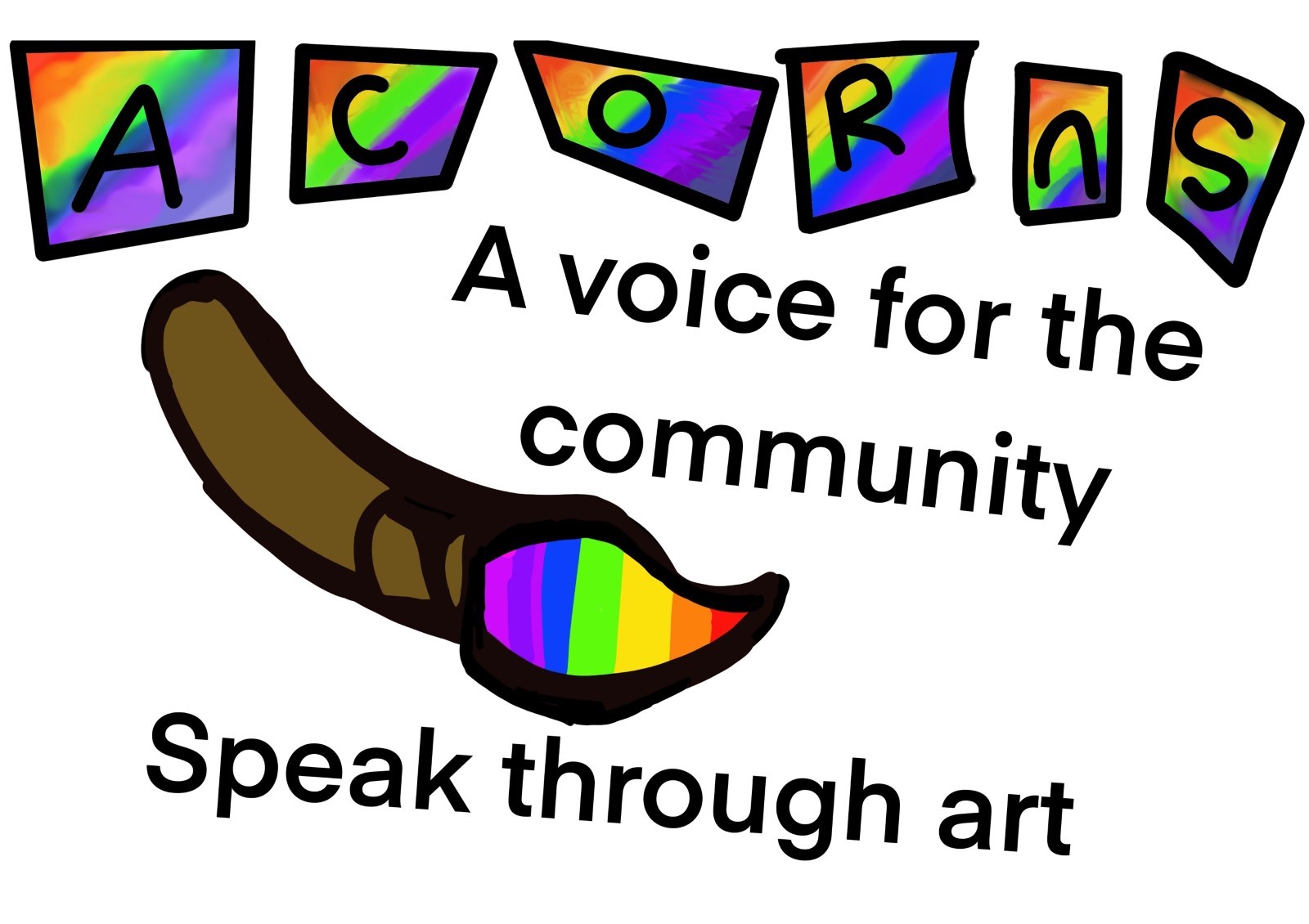
Students’ logo designs made in response to Sam’s Sketches
The team again discussed the images and decided they should aim to incorporate multiple ideas from different students’ designs rather than selecting one, to avoid singling out any particular young person’s contribution and excluding others.
Sam then worked up a second round of sketches, responding to the students’ ideas and feedback they discussed with Tracie, aiming towards designs that would honour their priorities.

Second round of sketches
We were unfortunately limited somewhat in how much more student interaction we could incorporate at this time due to Covid disruptions to schools. Ideally we would have liked to offer a further round of feedback and creative work, but the difficulties of coping with lockdown learning made it challenging for young people to engage fully.
The team therefore selected the design we felt best represented the ideas discussed so far with students and decided to move forward due to project time constraints.
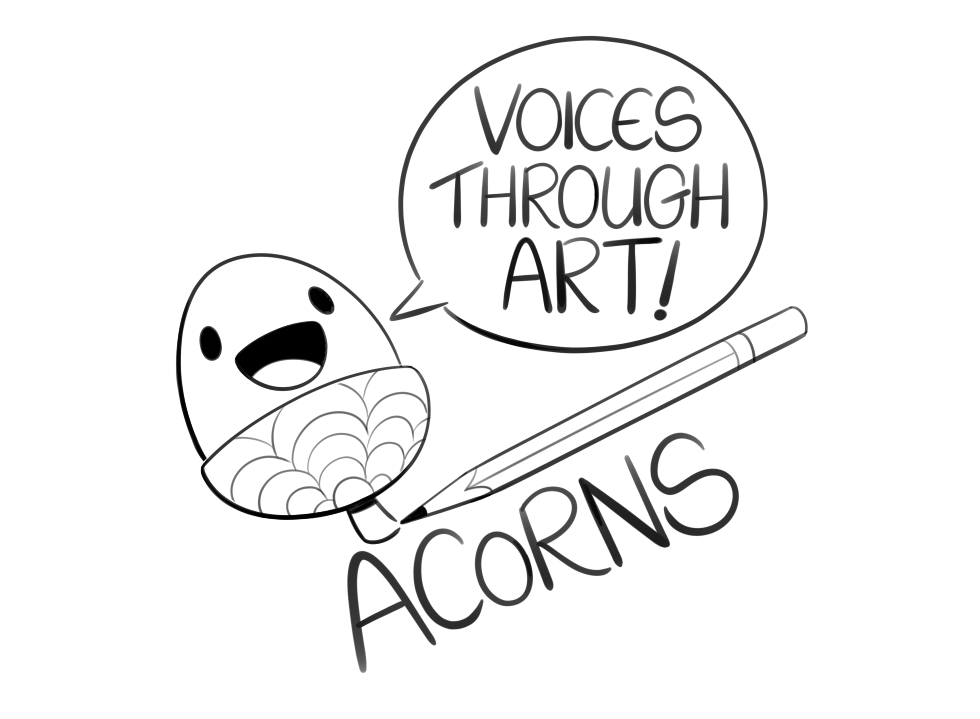
Final Logo linework design
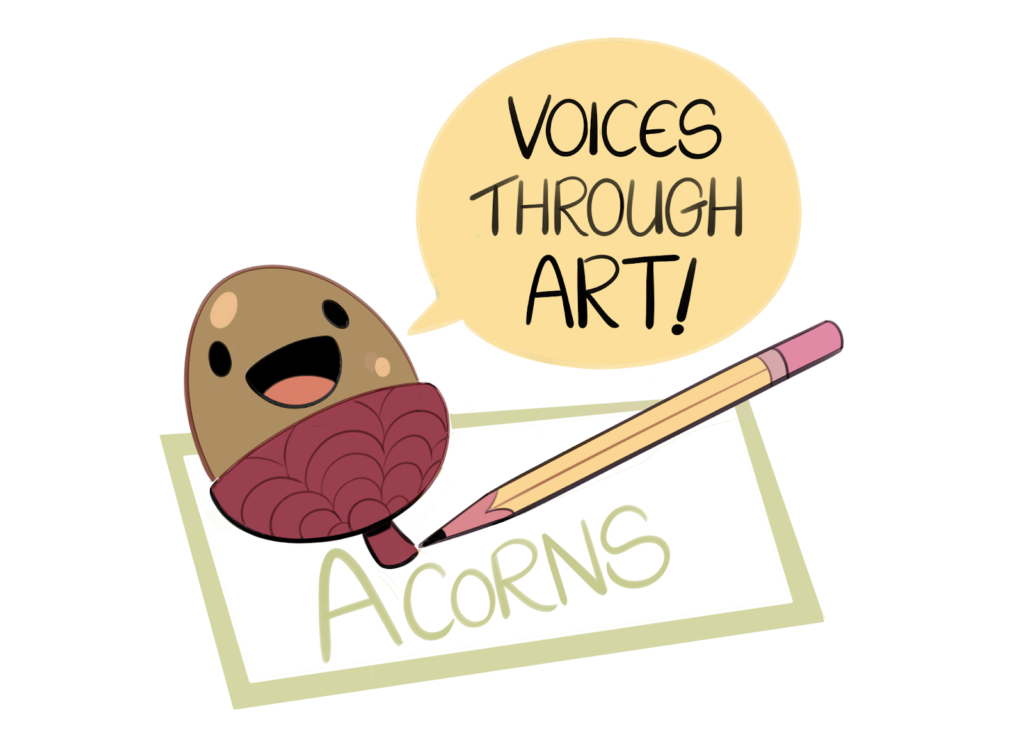
Current coloured version of the design
Overall the team was happy with the amount of collaboration we were able to achieve under difficult circumstances and felt the general format of idea generation being passed back and forth between the artist, team and young people iteratively was a good model to use moving into the comic making process.
Voices Through Art: Creating Four Short Comics
Targeted at Young Autistic People Transitioning from Primary to Secondary School (Funded Project)
Voices Through Art is a collaborative project between the Autism Community Research Network @ Southampton [ACoRNS], Samantha Davies, independent artist, and New Forest School.
It is an impact project designing four short comics targeted at autistic children transitioning from primary to secondary school. The transition between primary and secondary school is a daunting process, even more so for young autistic children, where the move from smaller, supportive environments to larger, independent ones, can have potentially long-term impacts on these individuals. Critically, the COVID-19 lockdown has resulted in significant disruptions and lack of support. Long-term effects have not yet been discovered, giving this project even more significance.
The project aims to support the wellbeing and resilience of children, family and schools through transitions by using existing and ongoing research in autistic children’s transition experiences, working closely with our partner schools to gain feedback throughout the design process and ensure the resulting comics reflect the resources individuals need to support their transitions. Through this project, we can provide a non-patronising, engaging resource to equip young people with ideas and strategies to encourage thoughts and management of the transition to secondary school that fills a gap current resources do not fill.
Upon completing the comics, we intend to gather feedback from individuals at our partner schools and their parents and teachers; evaluating their impact before and during the transition to secondary school during Summer/Autumn 2021. We also intend to raise awareness of the needs and understanding of autistic students from their perspectives by actively gathering and publicising the voices and experiences of those who have used the comic successfully on our social media, before developing a strong, proof-of-concept pitch to publishers to generate a more extensive graphic novel based on this project.